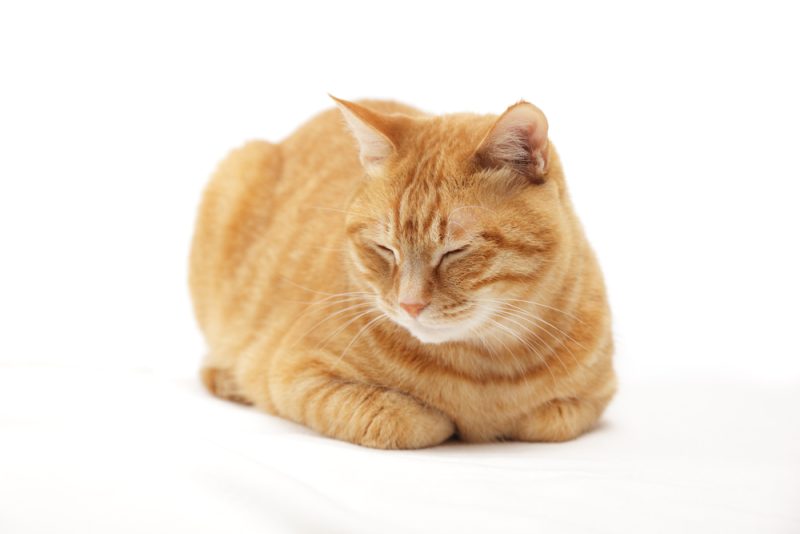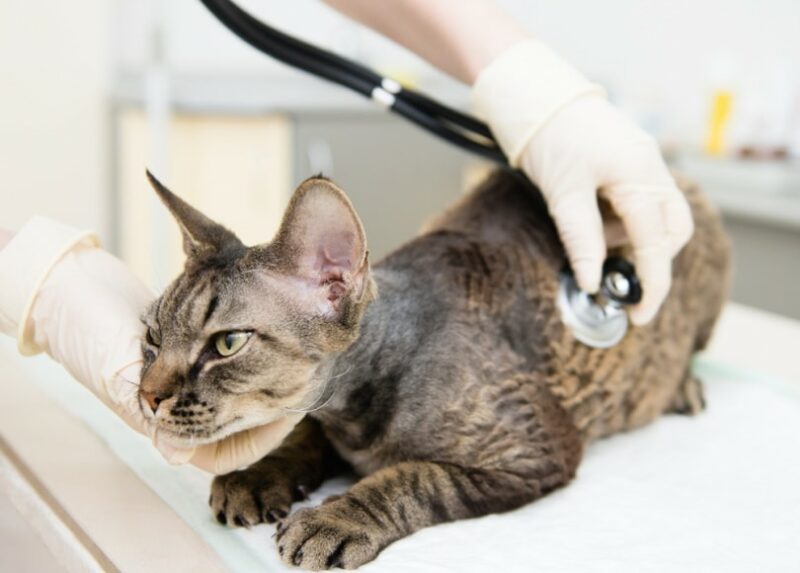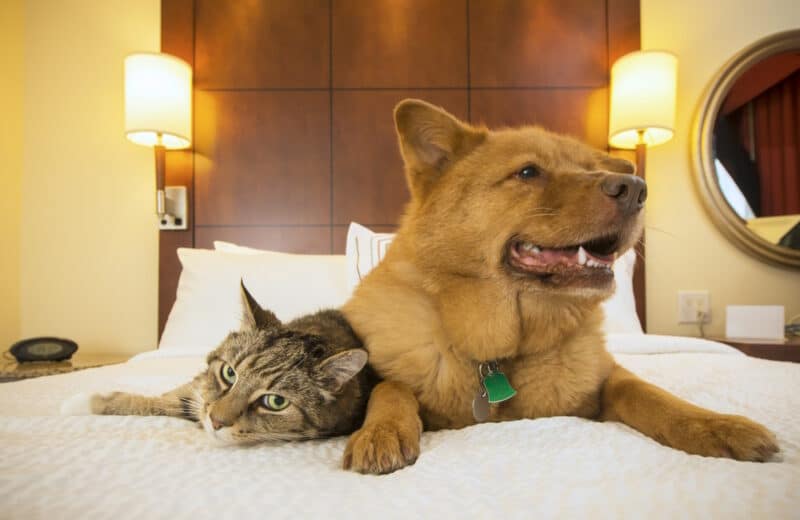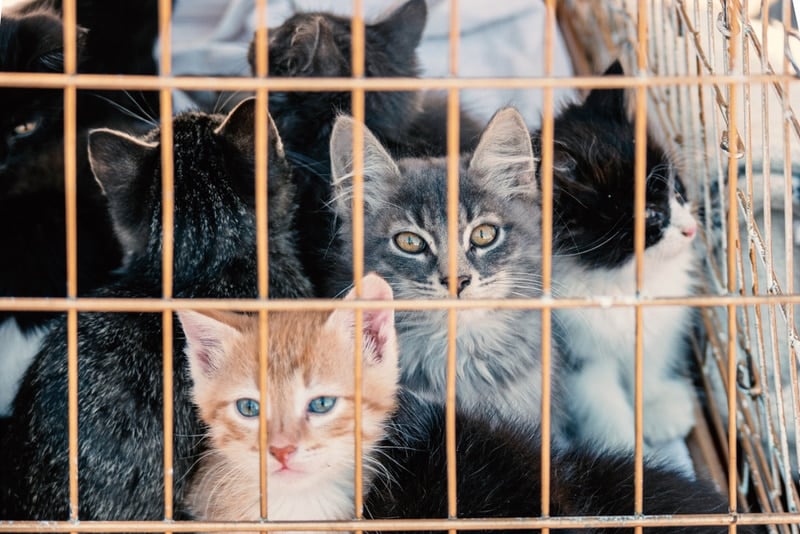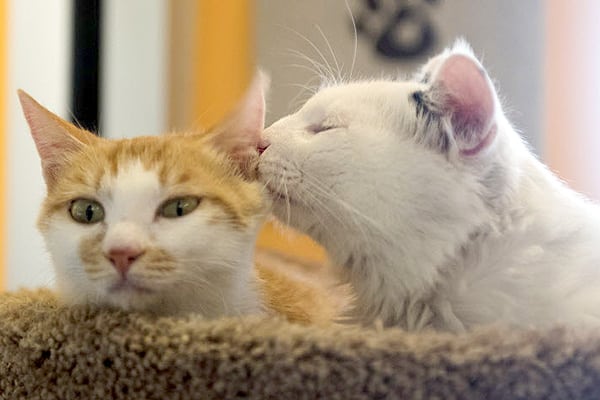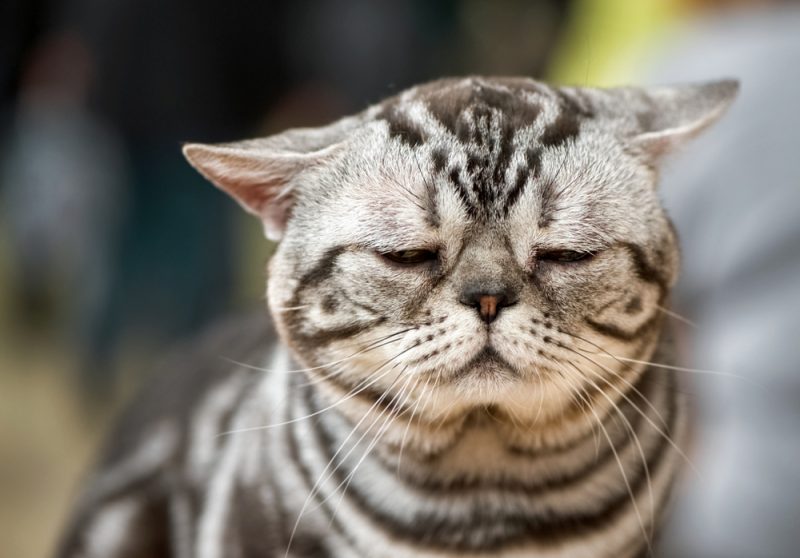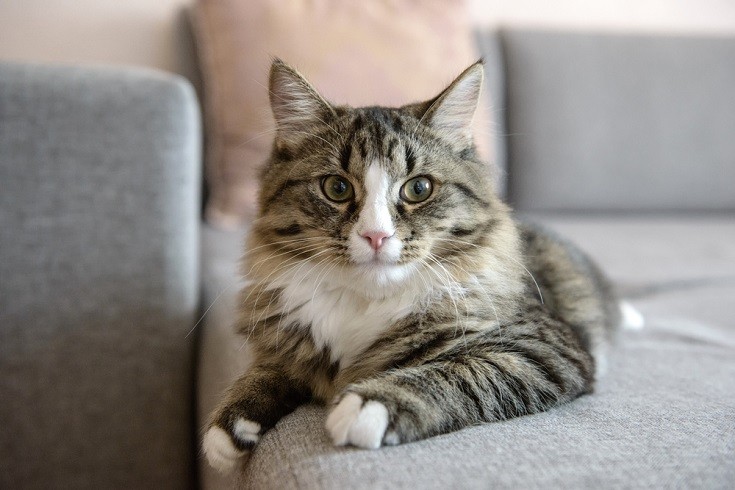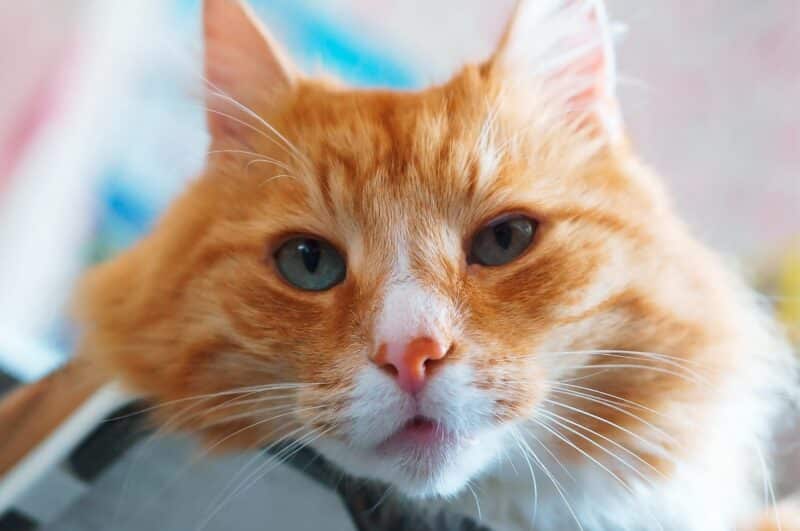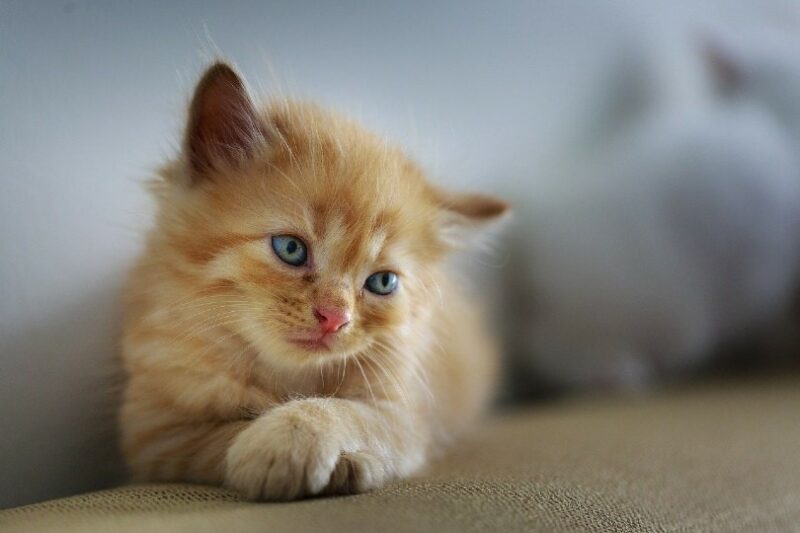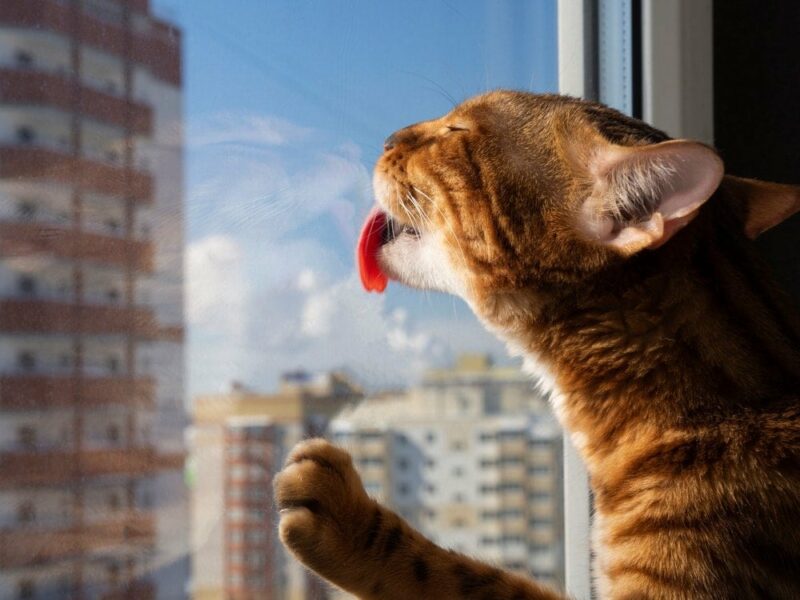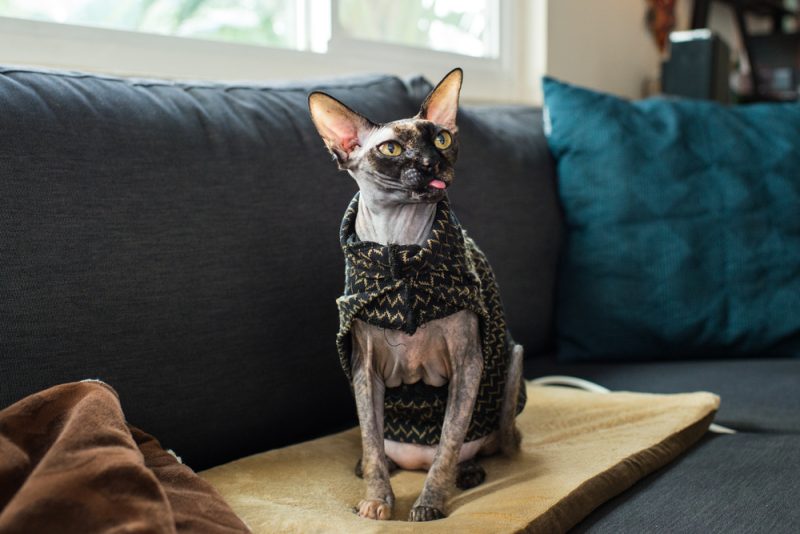The “loaf” position has become quite popular on social media. If you own a cat, you’ve likely seen your cat in this position. But why do cats loaf?
Some cats seem to sit in this manner all the time. Others seem to hardly sit in it at all. Those that do sit in the cat loaf position may only do so in certain situations or at certain times. In this article, we’ll take a look at all the reasons for cat loafing.

The 5 Reasons Why Cats Loaf
1. Relaxing
One theory as to why cats loaf is that it’s easy to relax in the cat loaf position. Their paws aren’t out, so they aren’t preparing to run away from anything or attack anything. They often only sit like this when they’re very relaxed for that reason. If they need to jump up fast or escape, they may not be able to do it as efficiently when in “cat loaf” mode as they would from other positions.
However, just because your cat isn’t sitting in this position doesn’t mean that they aren’t relaxed. Some cats seem to enjoy this position more often than others. It seems to be a matter of personal preference.

2. Comfort
Some cats find this position extremely comfortable; others don’t. This likely accounts for why some cats are in this position all the time, and others may only go into it every now and then. Some cats may only find this position comfortable in certain places, like on blankets or cushions with a bit more give.
Others may not like it at all even when they’re on something squishy. If your cat doesn’t find this position comfortable, it doesn’t necessarily mean anything bad. Different cats have different preferences.
3. Warmth
When the cat’s paws are tucked under them, their body may be more efficient at the preservation of heat. For this reason, this position is often warmer than other positions. If your cat is cold, they may be more likely to get into this position in an attempt at staying warm.
You can tell your cat is cold if they are seeking out warmer areas. For instance, your cat may like lying on blankets, which are squishy and help them conserve some heat. Other cats will seek out active heat sources, like air vents, fireplaces, and heaters.
Of course, if the room is a bit brisk or your cat has just come back inside, your cat may be a little bit cold. They may be more likely to enter loaf cat mode if they are cold.
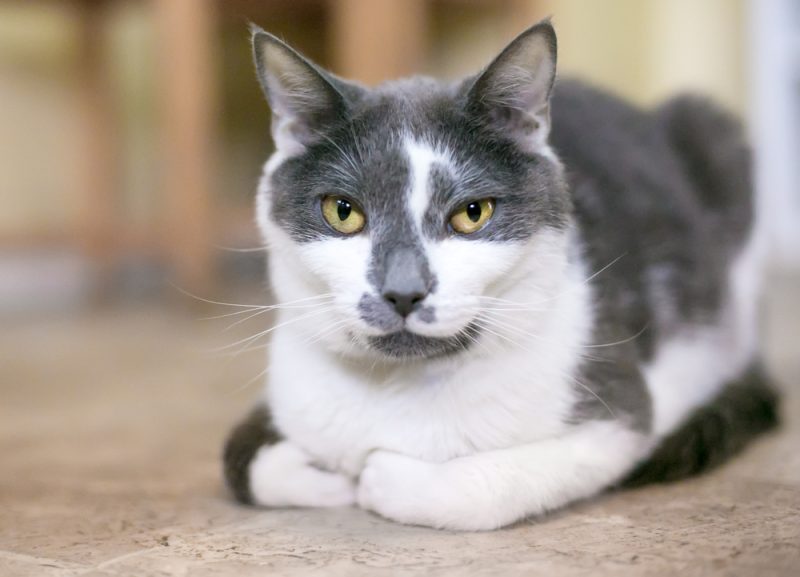
4. Respiratory Distress
Perhaps the only time that the loaf posture is concerning is when a cat is doing so because they are experiencing respiratory distress. When a cat’s body is in distress due to a lack of lung functionality, they tend to sit flat, with their chest and belly in contact with the ground and their limbs held close to the body. They do this because in this posture, their diaphragm can draw in the most amount of air as they inhale. In essence, a loaf posture is a compensatory mechanism during periods of respiratory crisis.
The best way to ascertain whether your cat is dealing with this issue is to look out for other signs of distress when you see them loafing.
- Very heavy breathing (their abdomen might move with every breath)
- Lethargy
- Coughing
- Very audible breathing (sometimes accompanied by heavy purring)
- Refusal to eat or a reduced appetite
- Extremities feeling very cold to the touch
- Gums appearing pale
Please note that this list isn’t exhaustive. For example, your cat may also start hiding more. If you suspect that your cat is experiencing respiratory distress, you should have them brought to a veterinarian immediately, as it is considered an emergency.
5. Other Illnesses, Stress, or Pain
Your cat sometimes may loaf during episodes of illness, stress, and injury and when experiencing the pain associated with these episodes. While typically not as serious as respiratory distress, these conditions also warrant prompt veterinary care.
Should I Stop My Cat From Lying in Cat Loaf Mode?
Not really. There is usually no problem with being in a cat loaf position. While it may not seem very comfortable to us, it is very comfortable to our felines.
The only time that you may need to worry about your cat sitting in loaf mode is if you suspect that they’re unwell or if they’ve suddenly started to loaf without doing so in the past.
Since it can be so difficult to tell whether a cat is sick, it is usually best to take them to the veterinarian just in case. You often won’t know for sure something is wrong with your feline until you take them to the vet and get a diagnosis.
Conclusion
Cats usually sit in a loaf position if they are exceedingly comfortable or trying to get warm. Some cats like this position more than others. It seems to be mostly a matter of personal preference. Occasionally, this may be a sign of pain or illness, and if you notice any subtle changes in your cat’s behavior, appetite, or litter box habits, or if they seem bothered with one or more of their legs or paws, get them checked out by your veterinarian as soon as possible.
Related Reads:
- Why Do Cats Meow Back at You? Vet-Reviewed Reasons for This Behavior
- Why Does My Cat Sit on Me All the Time?
Featured Image Credit: haru, Shutterstock
